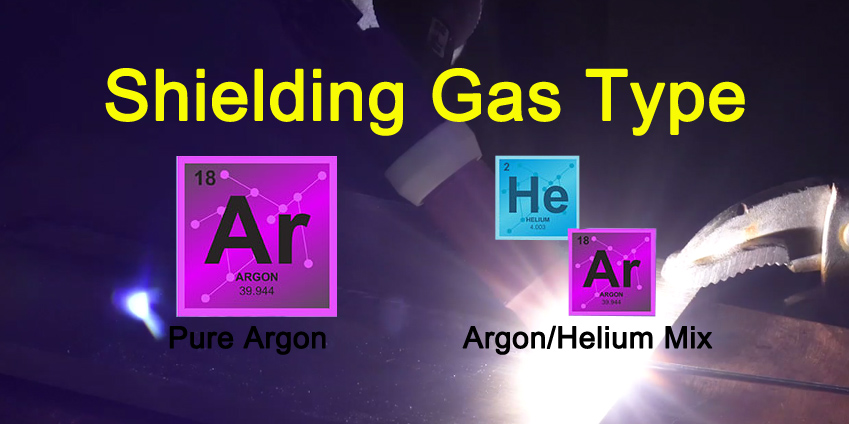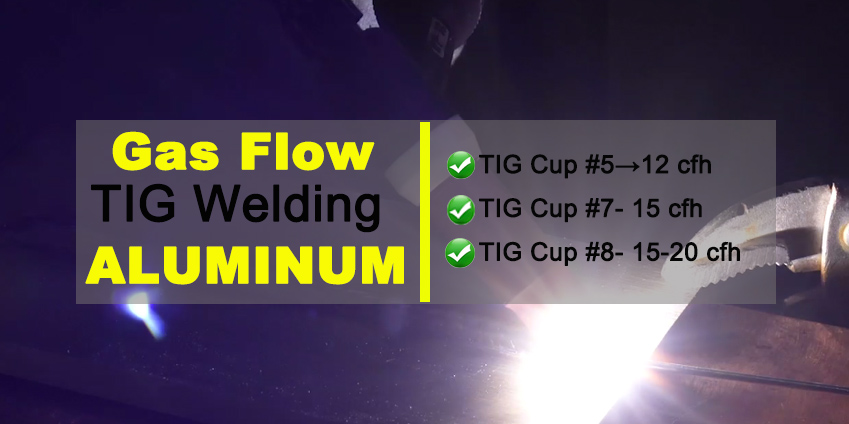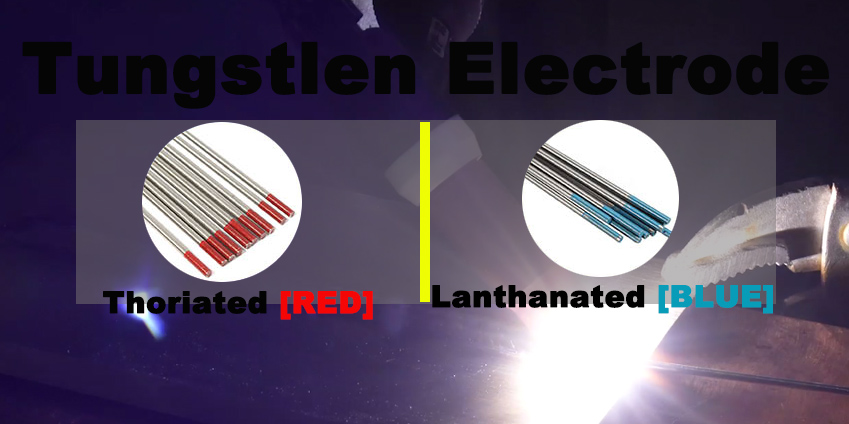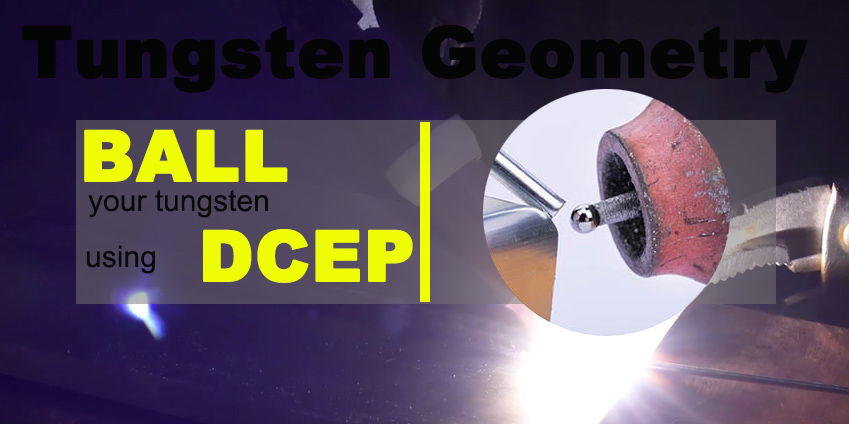
Shielding Gas Type
Regarding TIG Welding Gas, Pure Argon is still the favorite when it comes to TIG Welding Aluminum, especially for thin applications (less than 1/2 inch).
For thicker base metal (from 1/2 inch), using a mixture of Argon and Helium is highly recommended.
The addition of Helium makes your arc hotter, and thus improves weld penetration.
Depending on the thickness of your aluminum piece, you can choose 25 percent Helium or 50 percent Helium.

Proper Gas flow
The amount of gas flow is closely related to the cup size that you use.
It is usually based on experience, through many experiments around it.
For reference, for a TIG cup with size 7/16 inch needs about 15 cfh of gas flow.
Or a number 8 cup would require 15 to 20 cfh.
When your cup size drops down to a number 5, you would need only 12 cfh in this example.

What tungsten electrode to use for TIG Welding Aluminum?
Correct Tungsten Electrode Type
The 2 percent thoriated and 2 percent lanthanated tungsten electrodes can be of good use for TIG Welding Aluminum.
However, between the two, 2 percent lanthanide is more favorable, as it contains no radiation.
This tungsten can perform well on AC and can operate at high amperages.
For TIG Welding Aluminum, Pure Tungsten is NOT recommended.

Proper Tungsten Diameter
One common recommendation is to use a 1/8-inch tungsten electrode when working with aluminum.
This tungsten size provides enough heat and can maintain a stable arc throughout your welding session.
Other options when TIG welding aluminum with 2 percent lanthanated electrode include 3/16 inch and 3/32 inch types.
Tungsten Geometry
Regarding tungsten geometry, electrodes with balled tips are suitable.
Usually, this ball should be 1 to 1.5 times the diameter of the tungsten electrode.
Before starting TIG welding aluminum on AC, use reverse polarity (DCEP) to heat the tungsten and form a balled tip.
After having the ball at the tip of the tungsten, simply switch your TIG welder to AC and start your welding session with aluminum.




